Application of the Relative Orbit in an On-Orbit Service Mission
Abstract
1. Introduction
2. Relative Dynamics Model of Spacecraft
2.1. Coordinate System
2.2. Floquet Theory
- (1)
- When , the system is unstable;
- (2)
- When , the system maintains asymptotic stability;
- (3)
- When and the geometric multiplicity is equal to algebraic multiplicity for each modulus of eigenvalues 1, then the system is stable.
2.3. Stability Analysis of the Relative Dynamics Equations of Spacecraft
3. Analysis of Periodic Relative Motion Orbit
3.1. Determination for Initial Values of Periodic Relative Orbit
3.2. Simulation Examples for Periodic Relative Orbit
4. Design and Control for Hovering Orbit
4.1. Hovering Orbit without Perturbation
4.2. Hovering Orbit with Considering J2 Perturbation
4.3. Control for Hovering Orbit
4.4. Simulation Examples and Performance Test
5. Conclusions
- (1)
- The total control acceleration required to maintain the hovering state without considering perturbation increases with the increase of relative hovering distance and reaches a minimum at apogee;
- (2)
- J2 perturbation has a great influence on the hovering orbit. The difference in required total acceleration between the cases without perturbation and with J2 perturbation decreases gradually with the increase in relative hovering distance within a certain range;
- (3)
- The control acceleration curves are smooth enough to achieve hovering flying missions.
Author Contributions
Funding
Data Availability Statement
Acknowledgments
Conflicts of Interest
References
- Li, W.-J.; Cheng, D.-Y.; Liu, X.-G.; Wang, Y.-B.; Shi, W.-H.; Tang, Z.-X.; Gao, F.; Zeng, F.-M.; Chai, H.-Y.; Luo, W.-B.; et al. On-orbit service (OOS) of spacecraft: A review of engineering developments. Prog. Aerosp. Sci. 2019, 108, 32–120. [Google Scholar] [CrossRef]
- Han, C.; Zhang, S.; Wang, X. On-orbit servicing of geosynchronous satellites based on low-thrust transfers considering perturbations. Acta Astronaut. 2019, 159, 658–675. [Google Scholar] [CrossRef]
- Flores-Abad, A.; Ma, O.; Pham, K.; Ulrich, S. A review of space robotics technologies for on-orbit servicing. Prog. Aerosp. Sci. 2014, 68, 1–26. [Google Scholar] [CrossRef]
- Koryanov, V.V.; Zhang, B. Research on Coplanar Orbit Maneuvering in the Context of on-Orbit Service. IOP Conf. Ser. Mater. Sci. Eng. 2019, 630, 012001. [Google Scholar] [CrossRef]
- Huang, X.; Yan, Y.; Huang, Z. Finite-time control of underactuated spacecraft hovering. Control Eng. Pract. 2017, 68, 46–62. [Google Scholar] [CrossRef]
- Ogundele, A.D. Modeling and analysis of nonlinear spacecraft relative motion via harmonic balance and Lyapunov function. Aerosp. Sci. Technol. 2020, 99, 105761. [Google Scholar] [CrossRef]
- Chao, J.; Zhaokui, W.; Yulin, Z. Decomposition analysis of spacecraft relative motion with different inter-satellite ranges. Acta Astronaut. 2019, 163, 56–68. [Google Scholar] [CrossRef]
- Ogundele, A.D.; Agboola, O.A. Nonlinear dynamic modeling of spacecraft relative motion in elliptical orbit via power series approach for rendezvous and proximity operations. Aerosp. Syst. 2021, 4, 281–300. [Google Scholar] [CrossRef]
- Ogundele, A.D.; Agboola, O.A.; Oseni, O.F. Nonlinear high-fidelity modeling of spacecraft relative motion via orbit element differences. Aerosp. Syst. 2022, 5, 591–605. [Google Scholar] [CrossRef]
- Shao, L.; Miao, H.; Hu, R.; Liu, H. Reachable set estimation for spacecraft relative motion based on bang-bang principle. Chin. J. Aeronaut. 2023, 36, 229–240. [Google Scholar] [CrossRef]
- Sun, H.; Li, J. Analysis on reachable set for spacecraft relative motion under low-thrust. Automatica 2020, 115, 108864. [Google Scholar] [CrossRef]
- Ogundele, A.D.; Agboola, O.A.; Sinha, S.C. Application of Lyapunov–Floquet transformation to the nonlinear spacecraft relative motion with periodic-coefficients. Acta Astronaut. 2021, 187, 24–35. [Google Scholar] [CrossRef]
- Vepa, R. Feedback tracking control of optimal reference trajectories for spacecraft relative motion. Adv. Space Res. 2022, 69, 3478–3489. [Google Scholar] [CrossRef]
- Popov, A.M.; Kostin, I.; Fadeeva, J.; Andrievsky, B. Development and Simulation of Motion Control System for Small Satellites Formation. Electronics 2021, 10, 3111. [Google Scholar] [CrossRef]
- Hai-Shuo, W.; Xi-Yun, H. Forced hovering orbit above the primary in the binary asteroid system. Celest. Mech. Dyn. Astron. 2022, 134, 50. [Google Scholar] [CrossRef]
- Gong, Y. Application of Celestial Mechanics Theory in Spacecraft Orbit Design. J. Phys. Conf. Ser. 2021, 1985, 012070. [Google Scholar] [CrossRef]
- D’Ambrosio, A.; Circi, C.; Zeng, X. Solar-photon sail hovering orbits about single and binary asteroids. Adv. Space Res. 2019, 63, 3691–3705. [Google Scholar] [CrossRef]
- Zhang, Y.; Zeng, X.; Zhang, F. Spacecraft Hovering Flight in a Binary Asteroid System by Using Fuzzy Logic Control. IEEE Trans. Aerosp. Electron. Syst. 2019, 55, 3246–3258. [Google Scholar] [CrossRef]
- Sawai, S.; Scheeres, D.J.; Broschart, S.B. Control of Hovering Spacecraft Using Altimetry. J. Guid. Control Dyn. 2002, 25, 786–795. [Google Scholar] [CrossRef]
- Lee, D.; Sanyal, A.K.; Butcher, E.A.; Scheeres, D.J. Almost global asymptotic tracking control for spacecraft body-fixed hovering over an asteroid. Aerosp. Sci. Technol. 2014, 38, 105–115. [Google Scholar] [CrossRef]
- Chen, J.; Du, C.; Zhang, Y.; Han, P.; Wei, W. A Clustering-Based Coverage Path Planning Method for Autonomous Heterogeneous UAVs. IEEE Trans. Intell. Transp. Syst. 2022, 23, 25546–25556. [Google Scholar] [CrossRef]
- Chen, J.; Zhang, Y.; Wu, L.; You, T.; Ning, X. An Adaptive Clustering-Based Algorithm for Automatic Path Planning of Heterogeneous UAVs. IEEE Trans. Intell. Transp. Syst. 2022, 23, 16842–16853. [Google Scholar] [CrossRef]
- Broschart, S.B.; Scheeres, D.J. Control of Hovering Spacecraft Near Small Bodies: Application to Asteroid 25143 Itokawa. J. Guid. Control Dyn. 2012, 28, 343–354. [Google Scholar] [CrossRef]
- Huang, X.; Yan, Y. Output Feedback Control of Underactuated Spacecraft Hovering in Circular Orbit With Radial or In-Track Controller Failure. IEEE Trans. Ind. Electron. 2016, 63, 5569–5581. [Google Scholar] [CrossRef]
- Wang, G.; Zheng, W.; Meng, Y.; Tang, G. Research on hovering control scheme to non-circular orbit. Sci. China Technol. Sci. 2011, 54, 2974–2980. [Google Scholar] [CrossRef]
- Zhang, J.; Zhao, S.; Yang, Y. Characteristic Analysis for Elliptical Orbit Hovering Based on Relative Dynamics. IEEE Trans. Aerosp. Electron. Syst. 2013, 49, 2742–2750. [Google Scholar] [CrossRef]
- Razoumny, Y.N. Locally Geostationary Orbits: Optimal Geometry of Elliptic Orbit for Earth Coverage. J. Spacecr. Rocket. 2019, 56, 1017–1023. [Google Scholar] [CrossRef]
- Bai, S.; Han, C.; Rao, Y.; Sun, X.; Sun, Y. New fly-around formations for an elliptical reference orbit. Acta Astronaut. 2020, 171, 335–351. [Google Scholar] [CrossRef]
- Wang, J.; Li, H.; Lin, Z.; Huo, H. Time-Fixed Glideslope Guidance for Approaching the Proximity of an Asteroid. Aerospace 2021, 8, 137. [Google Scholar] [CrossRef]
- Dang, Z.; Wang, Z.; Zhang, Y. Modeling and Analysis of Relative Hovering Control for Spacecraft. J. Guid. Control Dyn. 2014, 37, 1091–1102. [Google Scholar] [CrossRef]
- Bai, S.; Han, C.; Sun, X.; Zhang, H.; Jiang, Y. Teardrop hovering formation for elliptical orbit considering J2 perturbation. Aerosp. Sci. Technol. 2020, 106, 106098. [Google Scholar] [CrossRef]
- Zhang, L.; Ge, P. Trajectory Optimization and Orbit Design of Spacecraft in Hovering Mission. J. Astronaut. Sci. 2020, 67, 1344–1373. [Google Scholar] [CrossRef]
- Zhang, L.; Ge, P. High precision dynamic model and control considering J2 perturbation for spacecraft hovering in low orbit. Adv. Space Res. 2021, 67, 2185–2198. [Google Scholar] [CrossRef]
- Zhang, L.; Ge, P. Modeling and Control for Spacecraft Hovering Considering J2∼J4 Perturbation. J. Phys. Conf. Ser. 2021, 1746, 012001. [Google Scholar] [CrossRef]
- Zhu, G.; Lu, K.; Cao, Q.; Huang, P.; Zhang, K. Dynamic behavior analysis of tethered satellite system based on Floquet theory. Nonlinear Dyn. 2022, 109, 1379–1396. [Google Scholar] [CrossRef]
- Breda, D.; Liessi, D. Floquet Theory and Stability of Periodic Solutions of Renewal Equations. J. Dyn. Differ. Equ. 2021, 33, 677–714. [Google Scholar] [CrossRef]
- Friedmann, P.; Hammond, C.E.; Woo, T.-H. Efficient numerical treatment of periodic systems with application to stability problems. Int. J. Numer. Methods Eng. 1977, 11, 1117–1136. [Google Scholar] [CrossRef]
- Gurfil, P. Relative Motion between Elliptic Orbits: Generalized Boundedness Conditions and Optimal Formationkeeping. J. Guid. Control Dyn. 2005, 28, 761–767. [Google Scholar] [CrossRef]
- Jang, S.-H.; Yang, Y.; Leeghim, H. Angular Rate Constrained Sliding Mode Control of UAVs for Path Following. Electronics 2021, 10, 2776. [Google Scholar] [CrossRef]
- Sun, C.; Agha, S.A.; Mohamed, Z.; Shaheed, M.H. Optimised Sliding Mode Control of a Hexacopter: Simulation and Experiments. Electronics 2022, 11, 2519. [Google Scholar] [CrossRef]
- Xie, B.; Dai, S. Robust Terminal Sliding Mode Control on SE(3) for Gough–Stewart Flight Simulator Motion Platform with Payload Uncertainty. Electronics 2022, 11, 814. [Google Scholar] [CrossRef]
- Oh, K.; Seo, J. Development of a Sliding-Mode-Control-Based Path-Tracking Algorithm with Model-Free Adaptive Feedback Action for Autonomous Vehicles. Sensors 2022, 23, 405. [Google Scholar] [CrossRef]
- Balta, G.; Altin, N.; Nasiri, A. Interval Type-2 Fuzzy-Logic-Based Constant Switching Frequency Control of a Sliding-Mode-Controlled DC–DC Boost Converter. Appl. Sci. 2023, 13, 3239. [Google Scholar] [CrossRef]
- Utkin, V. Variable structure systems with sliding modes. IEEE Trans. Autom. Control 1977, 22, 212–222. [Google Scholar] [CrossRef]
- Hung, J.Y.; Gao, W.; Hung, J.C. Variable structure control: A survey. IEEE Trans. Ind. Electron. 1993, 40, 2–22. [Google Scholar] [CrossRef]
- Utkin, V.I. Sliding mode control design principles and applications to electric drives. IEEE Trans. Ind. Electron. 1993, 40, 23–36. [Google Scholar] [CrossRef]
- Young, K.D.; Utkin, V.I.; Ozguner, U. A control engineer’s guide to sliding mode control. IEEE Trans. Control Syst. Technol. 1999, 7, 328–342. [Google Scholar] [CrossRef]
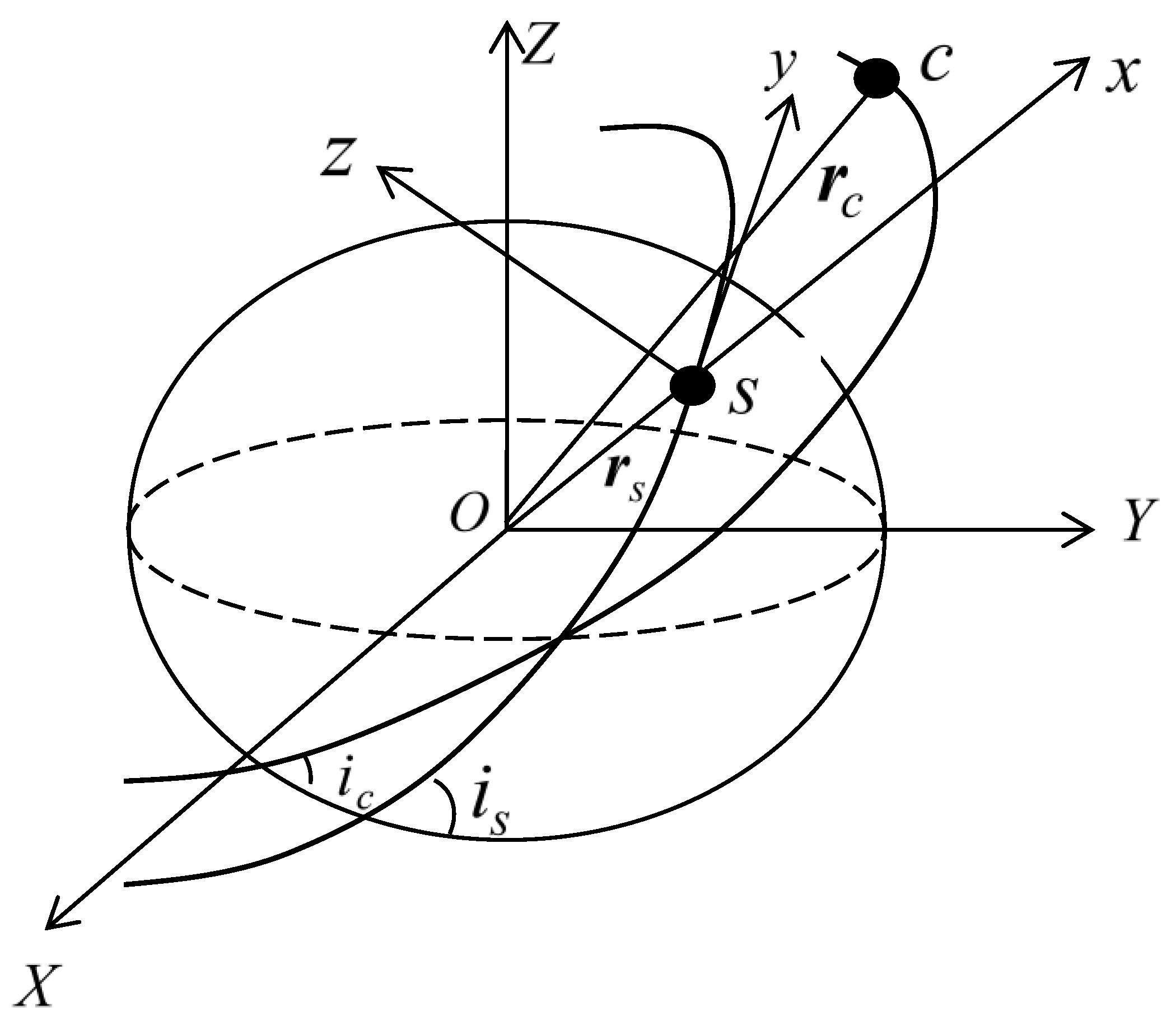

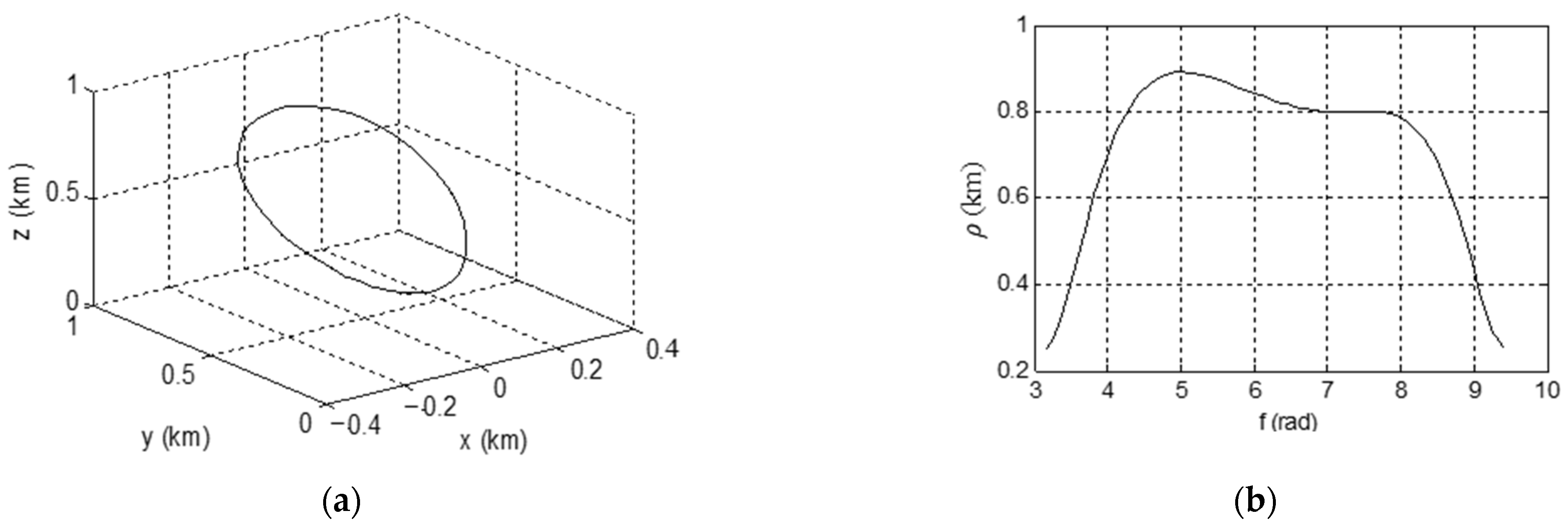
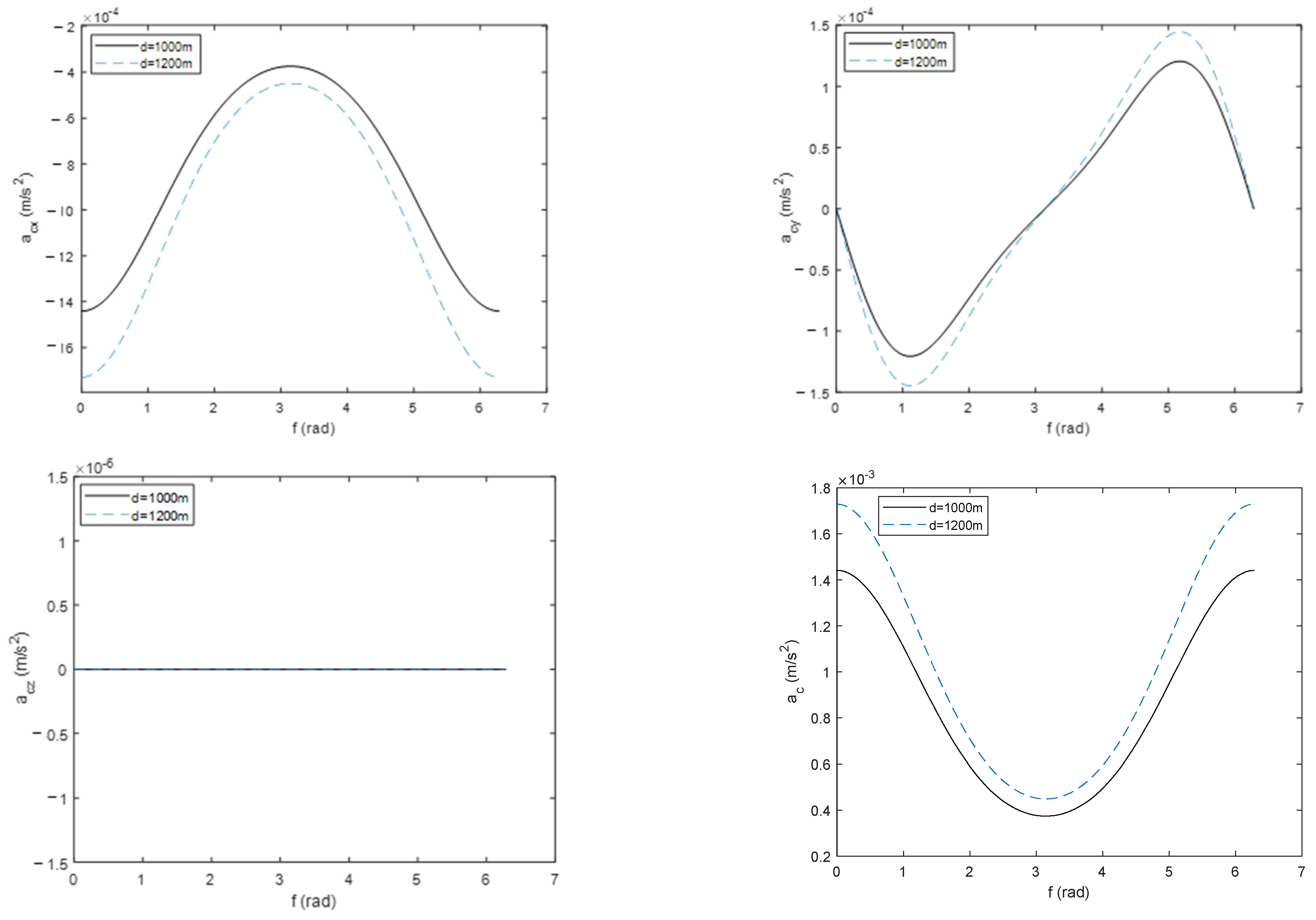
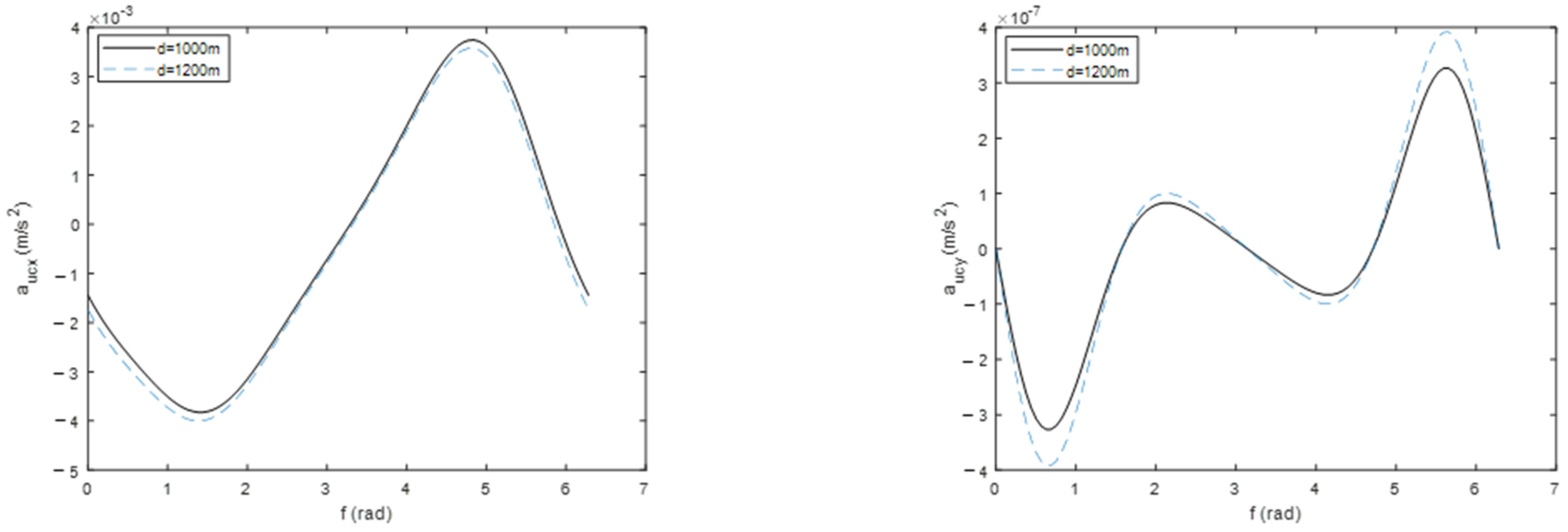
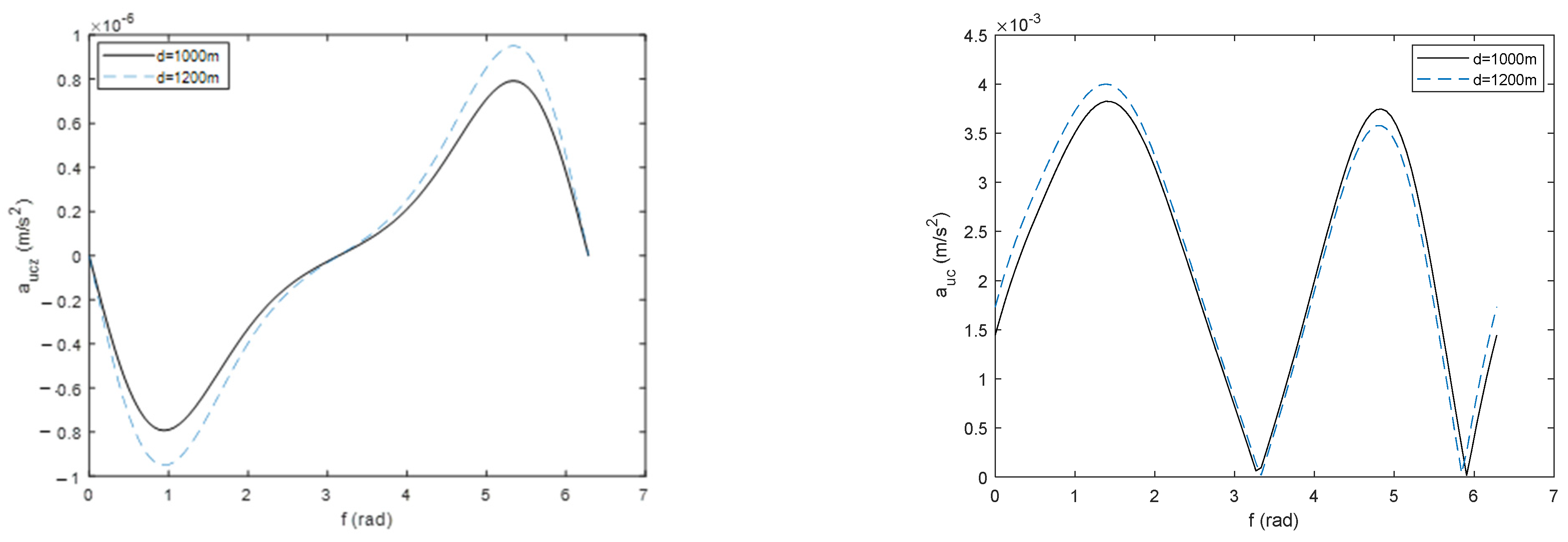

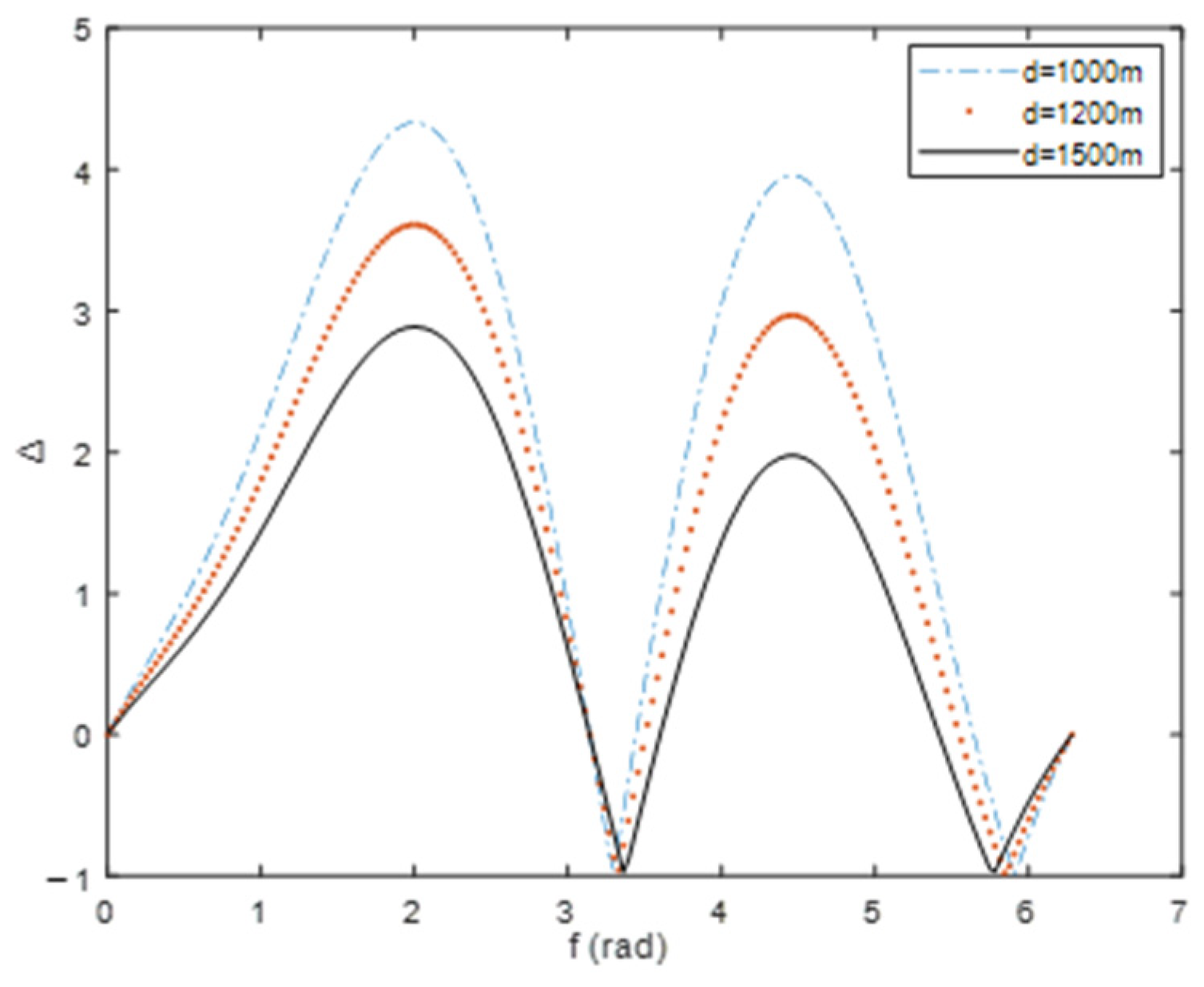

| 1.0000 + 0.0000i | 1.0000 − 0.0000i | 1.0000 + 0.0000i | 1.0000 − 0.0000i | 1.0000 | 1.0000 |
| 1.0064 + 0.0146i | 1.0064 − 0.0146i | 0.9936 + 0.0146i | 0.9936 − 0.0146i | 1.0000 | 1.0000 |
| 1 | −6104.83 | 7312.26 | −3118.19 | −8652.17 | −5108.53 | 4959.66 |
| 2 | −22,414.5 | 140.636 | 1934.44 | 1606.63 | 6577.64 | 18138 |
| 3 | −0.241799 | −0.227048 | 0.224848 | 0.382469 | 0.587169 | 1.00422 |
| 4 | −0.0312921 | 0.245415 | −0.0307399 | −0.224676 | 0.0759563 | 0.835116 |
| Orbital Elements | The Target Spacecraft |
|---|---|
| 12,000 | |
| 0.2 | |
| 30 | |
| 0 | |
| 0 |
Disclaimer/Publisher’s Note: The statements, opinions and data contained in all publications are solely those of the individual author(s) and contributor(s) and not of MDPI and/or the editor(s). MDPI and/or the editor(s) disclaim responsibility for any injury to people or property resulting from any ideas, methods, instructions or products referred to in the content. |
© 2023 by the authors. Licensee MDPI, Basel, Switzerland. This article is an open access article distributed under the terms and conditions of the Creative Commons Attribution (CC BY) license (https://creativecommons.org/licenses/by/4.0/).
Share and Cite
Li, X.; Zhang, L.; Li, Z.; He, X. Application of the Relative Orbit in an On-Orbit Service Mission. Electronics 2023, 12, 3034. https://doi.org/10.3390/electronics12143034
Li X, Zhang L, Li Z, He X. Application of the Relative Orbit in an On-Orbit Service Mission. Electronics. 2023; 12(14):3034. https://doi.org/10.3390/electronics12143034
Chicago/Turabian StyleLi, Xuehua, Lei Zhang, Zhijun Li, and Xingsuo He. 2023. "Application of the Relative Orbit in an On-Orbit Service Mission" Electronics 12, no. 14: 3034. https://doi.org/10.3390/electronics12143034
APA StyleLi, X., Zhang, L., Li, Z., & He, X. (2023). Application of the Relative Orbit in an On-Orbit Service Mission. Electronics, 12(14), 3034. https://doi.org/10.3390/electronics12143034





